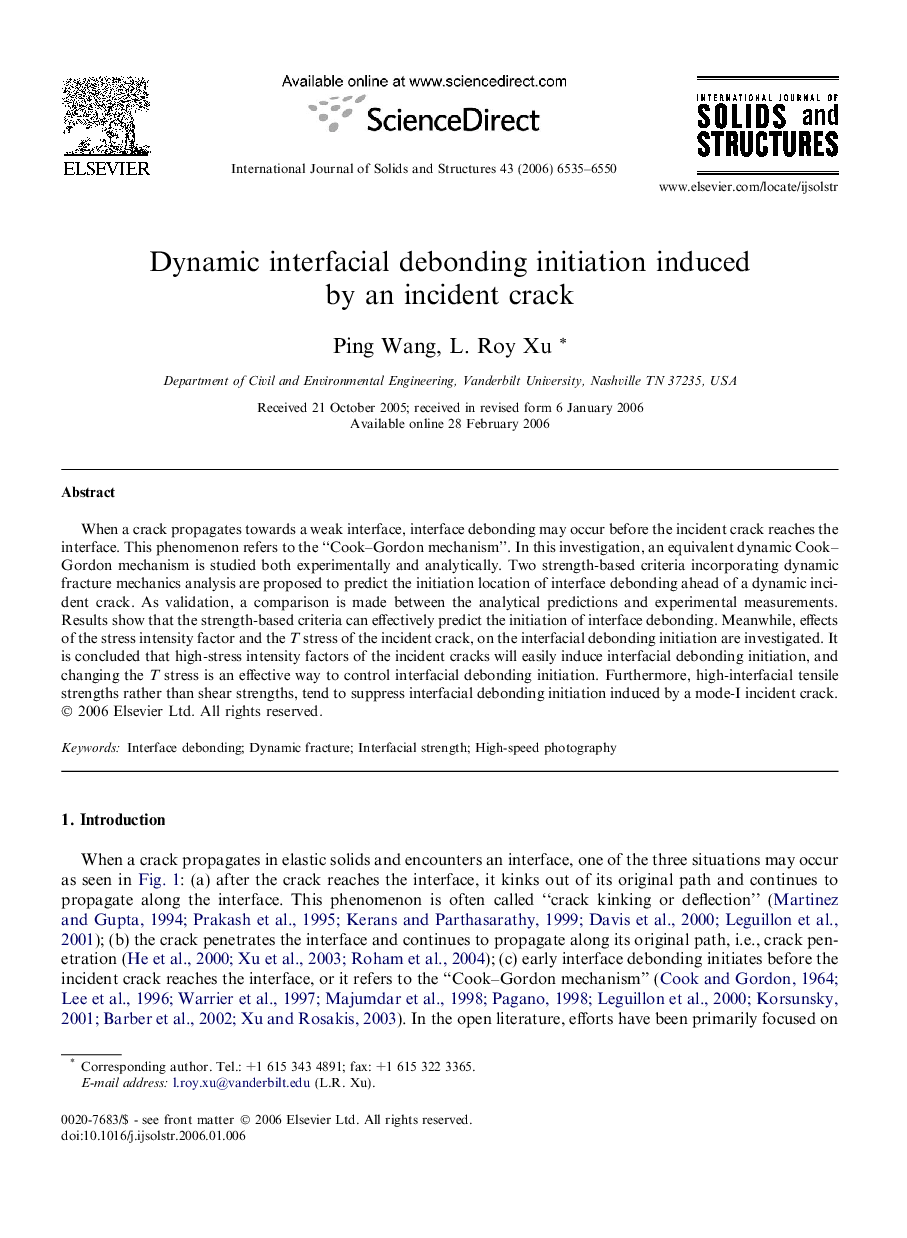| Article ID | Journal | Published Year | Pages | File Type |
|---|---|---|---|---|
| 280489 | International Journal of Solids and Structures | 2006 | 16 Pages |
When a crack propagates towards a weak interface, interface debonding may occur before the incident crack reaches the interface. This phenomenon refers to the “Cook–Gordon mechanism”. In this investigation, an equivalent dynamic Cook–Gordon mechanism is studied both experimentally and analytically. Two strength-based criteria incorporating dynamic fracture mechanics analysis are proposed to predict the initiation location of interface debonding ahead of a dynamic incident crack. As validation, a comparison is made between the analytical predictions and experimental measurements. Results show that the strength-based criteria can effectively predict the initiation of interface debonding. Meanwhile, effects of the stress intensity factor and the T stress of the incident crack, on the interfacial debonding initiation are investigated. It is concluded that high-stress intensity factors of the incident cracks will easily induce interfacial debonding initiation, and changing the T stress is an effective way to control interfacial debonding initiation. Furthermore, high-interfacial tensile strengths rather than shear strengths, tend to suppress interfacial debonding initiation induced by a mode-I incident crack.
